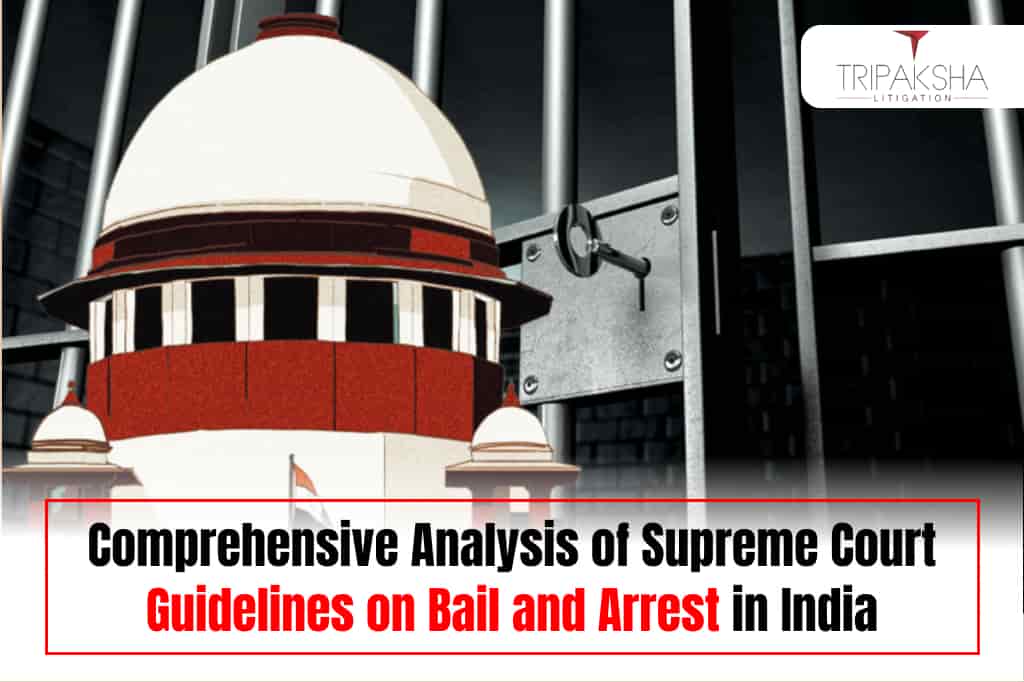Categories: Legal Articles
Introduction:
The Supreme Court of India, in a series of recent decisions, has issued groundbreaking guidelines addressing a critical issue within the Indian criminal justice system: the circumstances under which a person should be taken into custody by the court following the filing of a chargesheet by the investigating agency. These guidelines, collectively referred to as the “Antil series,” are pivotal in striking a delicate balance between safeguarding individual liberties and upholding the integrity of judicial processes. In this comprehensive analysis, we will delve into the nuances of these guidelines, exploring their implications and significance within the Indian legal landscape.
Understanding the Context:
To appreciate the significance of the Antil series of decisions, it is essential to grasp the backdrop against which these guidelines have emerged. The cases at the heart of these decisions revolve around individuals who were named as accused parties in FIRs filed by the Central Bureau of Investigation (CBI). Notably, these individuals were not arrested during the course of the investigation. Subsequently, chargesheets were filed, and the court assumed cognizance of these charges, all while the accused persons remained absent from court proceedings. This absence ultimately led to the issuance of non-bailable warrants against them.
Antil-1: Setting the Stage
The Antil-1 decision, handed down by the Supreme Court, laid down the foundation for the subsequent guidelines. It presented a categorization of offenses into four distinct categories, each associated with specific guidelines pertaining to the process to be followed when certain conditions are met. These conditions stipulated that the accused person should not have been arrested during the investigation and that they should have cooperated fully with the investigative process, including complying with summons from the investigating officer.
Category A: Lesser Offenses
In Category A, which covers offenses punishable with imprisonment of up to 7 years, and which do not involve charges of death, life imprisonment, or imprisonment exceeding 7 years, the court recommended a cautious approach. It suggested beginning with an ordinary summons, allowing the accused to appear through a lawyer. If the accused failed to appear after summons, the court could issue a bailable warrant (BW) for physical appearance. Only if the accused continued to evade the process could a non-bailable warrant (NBW) be issued. Significantly, the Antil-1 guidelines opened the door for the cancellation or conversion of an NBW into a BW or summons if the accused applied for such a conversion, along with an undertaking to appear on the next court date. Furthermore, the court proposed that bail applications could be decided based on the accused’s appearance without the necessity of physical custody, or interim bail could be granted until the final bail application decision.
Category B: Heinous Offenses
Category B encompassed offenses punishable with death, life imprisonment, or imprisonment exceeding 7 years. For cases falling under this category, the court recommended a bail application to be decided on merits upon the accused’s appearance in court.
Category C: Special Offenses
Category C pertained to offenses governed by special acts with stringent provisions for bail, such as the Narcotic Drugs and Psychotropic Substances Act, the Prevention of Money Laundering Act, the Unlawful Activities (Prevention) Act, and the Companies Act. The guidelines for Category C offenses stipulated that the bail application should be considered on its merits, taking into account the specific conditions and provisions for bail outlined in the relevant special act.
Category D: Economic Offenses
The final category, Category D, focused on economic offenses not covered by special acts. For these cases, the court recommended that bail applications should be considered based on their merits, considering the gravity of the offense, the purpose of the Special Act, the circumstances, and the length of the sentence.
Antil-2: Clarifications and Expansion
Building on the framework established in Antil-1, the Antil-2 decision provided essential clarifications. It emphasized that the primary intent of these guidelines was to expand the scope of bail, not to constrict it. The court aimed to discourage arbitrary arrests upon the filing of chargesheets. Antil-2 underscored that these guidelines did not impose additional restrictions but sought to broaden the horizons of bail.
Antil-3: Refinement and Nuanced Observations
In Antil-3, the Supreme Court further refined the bail jurisprudence and offered nuanced observations. It reiterated crucial legal principles pertaining to various aspects of arrest, warrants, bonds, and custody, underlining their significance within the broader context of criminal procedure.
General Observations:
The court reinforced its previous decisions concerning procedures for arrest, warrants, bonds, default bail, custody, chargesheets, issuance of process, adjournments, suspension of sentence pending appeal, bail for undertrial prisoners, bail provisions, and bond amounts.
Notable Clarifications:
Antil-3 emphasized strict compliance with earlier decisions, especially Siddharth v. State of UP, which emphasized that when the prosecution does not require custody, there is no need for an arrest under Section 170 of the Code of Criminal Procedure (CrPC). Furthermore, the court clarified that bail applications should not be insisted upon when considering sections related to bonds.
Specific Guidelines:
The court elaborated on specific sections of the CrPC and their implications. For instance, it highlighted the significance of sections 41, 41A, and 60A concerning arrest, as well as sections 87 and 88 pertaining to warrants and bonds. The court also discussed sections 167(2), 170, 204, 209, 309, 389, 437, 439, and 440, emphasizing their relevance in the context of bail and custody.
Category-Specific Observations:
Regarding Category A and B offenses, the court reiterated the application of general bail principles. For Category C offenses (special acts), the court recognized the importance of considering delays and the severity of charges while noting that there should be no further arrest if the accused has not been consciously arrested by the prosecution or has been released on bail. Notably, the court dismissed the idea that all economic offenses (Category D) should be treated uniformly, advocating for a case-by-case assessment based on factors like the gravity of the offense, the objectives of the Special Act, and the circumstances surrounding it.
Conclusion: Upholding Liberty and Justice
The Antil series of decisions by the Supreme Court signifies a concerted effort to expand the scope of bail and mitigate doubts arising from the application of statutory provisions that potentially infringe upon individual liberties. While the intent behind these guidelines is clear—to enlarge the scope of bail—their practical impact leaves room for further evaluation.
These guidelines emphasize the need for a proportionate response to the gravity of the offense and the cooperation of the accused during the investigation. They seek to establish a fairer, more equitable criminal justice system in India, one that prioritizes summons over arrests and expedites the disposal of bail applications.
In essence, the Antil series reinforces the principle of “Bail, not Jail.” It places faith in the judiciary’s ability to balance the demands of justice with the protection of individual liberty. These guidelines represent a significant step forward in ensuring a legal framework that respects the rights and freedoms of all individuals involved in the Indian criminal justice system.








